Ford Class CVN Aircraft Carrier
As the U.S. Navy’s first new aircraft carrier design in 40 years, the Ford class is set to replace the aging Nimitz and retired Enterprise class carriers as the cornerstone of U.S. naval forward operating forces. Named in honor of America’s 38th president, the Ford class promises to bring both improved quality of life for sailors and warfighting capability to the fleet, along with reduced total ownership costs. However, mired by cost overruns and schedule delays due largely to concurrent development, test, and integration of immature technologies, the Navy is still awaiting delivery of its first-in-class carrier, the USS Gerald R. Ford (CVN 78), with delivery projected sometime in 2017.
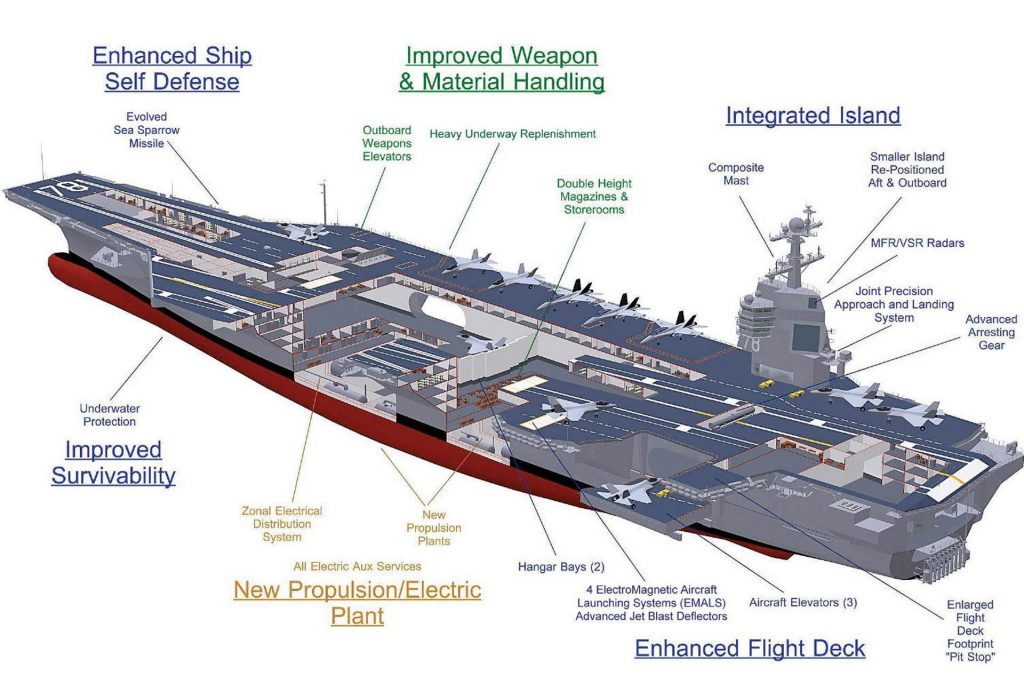
Unique Technology:
Gone are the days of pencil and paper drafting, and the Navy has taken full advantage of recent advances in engineering design software. The Ford class is the Navy’s first aircraft carrier to be completely designed using a full-scale, 3-dimensional digital model.
The second carrier in the class, the USS John F. Kennedy, is taking this technology one step further to streamline the building process. They’re even utilizing Google Maps’ algorithm to find the most optimal route to run electrical cables throughout the ship.
Continuing the theme of ditching old technology, the Ford class is the first aircraft carrier to eliminate the need for steam service lines by replacing them with all electric utilities, reducing maintenance costs and improving corrosion control in the process.
Power:
To power these massive vessels, the Ford class is equipped with two newly-designed nuclear reactors and has more than double the electrical capacity over previous carriers.
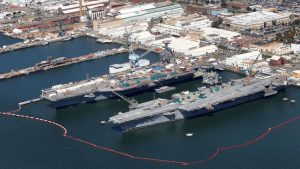
Cost:
Anyone have $42 billion lying around? That’s how much it’ll cost the Navy for its three Ford-class carriers. Plagued by over $2.3 billion in cost overruns, the USS Gerald R. Ford alone costs nearly $13 billion.
Despite this, the US Navy claims that compared to the Nimitz class, each Ford class carrier will save more than $4 billion in total ownership costs over its 50-year service life. Much of this is a result of the fewer number of sailors required to operate the ship.
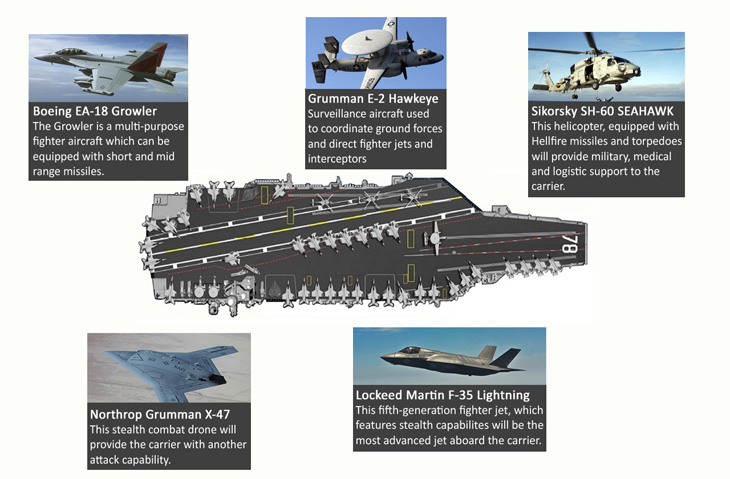
Weapons Systems:
The Ford class was designed to maximize striking power. While carrying over 75 aircraft at any given time, the redesigned and reconfigured flight deck increases sortie generations by over 33 percent compared to the Nimitz class.
The carrier is armed with incoming missile defense systems. Furthermore, its new electrical systems can accommodate directed energy weapons.
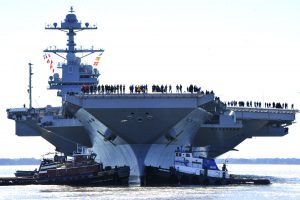
Uses:
Like all aircraft carriers and carrier strike groups, the Ford class will provide forward presence and deterrence, sea control for maritime security, sustained power projection in support of U.S. and coalition forces, as well as disaster relief and humanitarian assistance.
History/Development:
The Ford class is the first new U.S. aircraft carrier design in 40 years since the launching of USS Nimitz (CVN 68).
The first of three carriers in this class, the USS Gerald R. Ford, was ordered from Newport News Shipbuilding in September, 2008. Originally scheduled to be delivered in 2014, it has faced repeated delays and continues to struggle with meeting operational requirements. Now, it looks like the Navy won’t get its new ship until sometime in 2017, or possibly later.
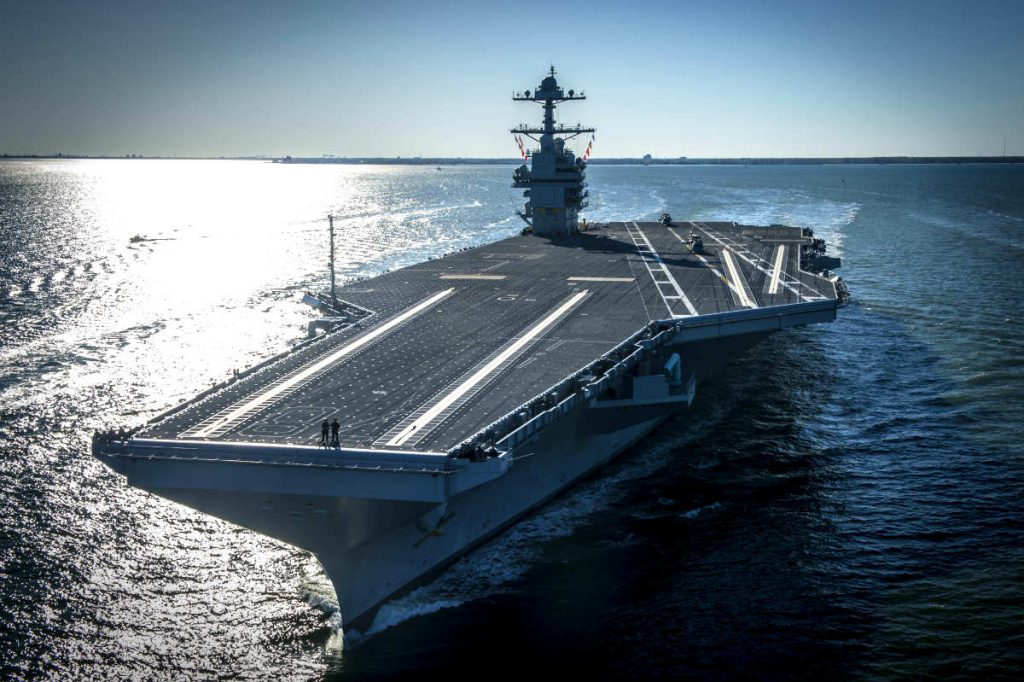
“The Ford-class program is a case study in why our acquisition system must be reformed — unrealistic business cases, poor cost estimates, new systems rushed to production, concurrent design and construction, and problems testing systems to demonstrate promised capability,” said Sen. John McCain, chairman of the Senate Armed Services Committee, in a statement released in July 2016, according to a CNN report.
The next carrier in the Ford class, the USS John F. Kennedy (CVN 79), is currently under construction and scheduled to launch in 2020. The USS Enterprise (CVN 80), the third Ford-class carrier, is set to begin construction in 2018.
Now see more incredible images of the USS Gerald R. Ford (CVN 78).
See Ford Class Specifications
| Builder: Huntington Ingalls Industries Newport News Shipbuilding, Newport News, Va. |
| Propulsion: Two nuclear reactors, four shafts |
| Length: 1,092 feet |
| Beam: 134 feet, Flight Deck Width: 256 feet |
| Displacement: Approximately 100,000 long tons full load |
| Speed: 30+ knots (34.5+ miles per hour) |
| Crew: 4,539 (ship, air wing, and staff) |
| Armament: Evolved Sea Sparrow Missile, Rolling Airframe Missile, CIWS |
| Aircraft: 75+ |
| Ships: PCU Gerald R. Ford (CVN 78), PCU John F. Kennedy (CVN 79) |

